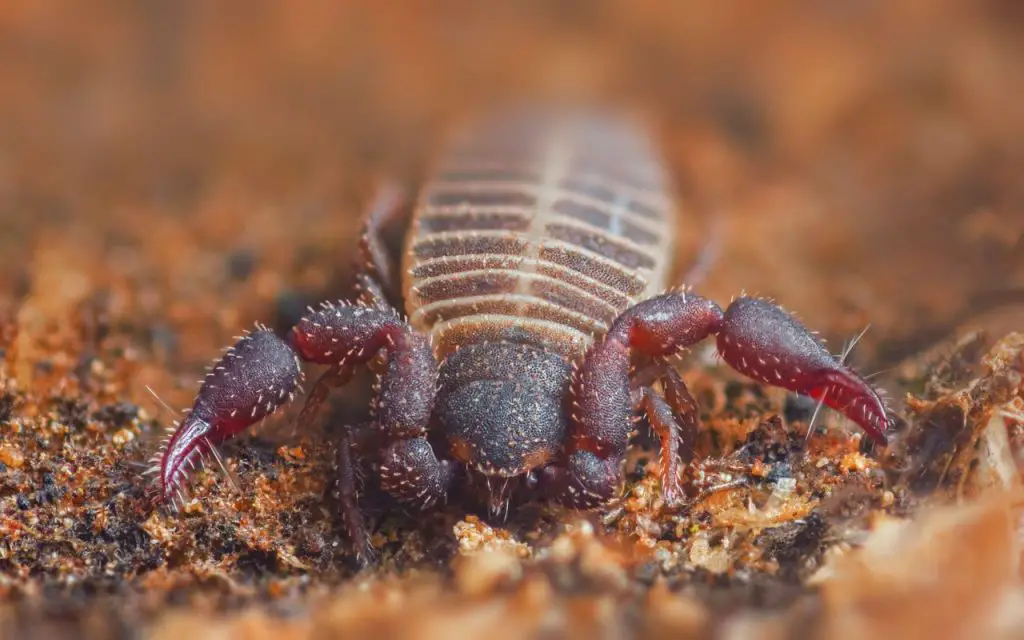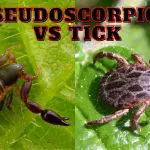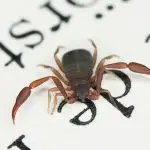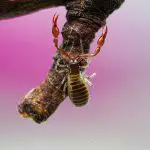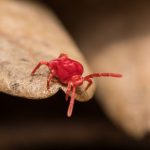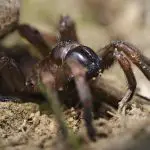How can pseudoscorpions be helpful to humans? Well, as tiny predators, they’re great at eating bugs that would otherwise damage our books, furniture and food…
Since they feed on mites, ants, booklice, small flies, and larvae of the clothing moth, carpet beetle, and other pests, pseudoscorpions are typically advantageous to people. While they are common in many environments, you may not quickly notice them due to their small size. It is easy to confuse pseudoscorpions for tiny spiders or ticks, especially when they appear indoors.
Where Are Pseudoscorpions Found?
Pseudoscorpions can live in various settings, and you frequently find them in fissures and other small areas. Also, you can find them under leaf litter, moss, stones, and tree bark, and in bird and mammal nests, and they prefer high humidity.
You can spot them in dump areas such as basements, laundry rooms, or bathrooms, but they can inhabit any space in the house.
In addition, you can still find these false scorpions outdoors. They occur primarily in manure, mulch, moss, leaf litter, under stones, tree bark, and between construction boards.
While they are rarely mobile, they move by means of phoresis. This means they can get into your home by attaching themselves to other insects, such as beetles or flies. They can also land on firewood and end up in your house.
Pseudoscorpions are harmless arachnids that appear mostly during warmer days of spring, fall, and summer. Overall, they are most common in warm climates, but there are species of Pseudoscorpions that live in Canada, and northern Europe.
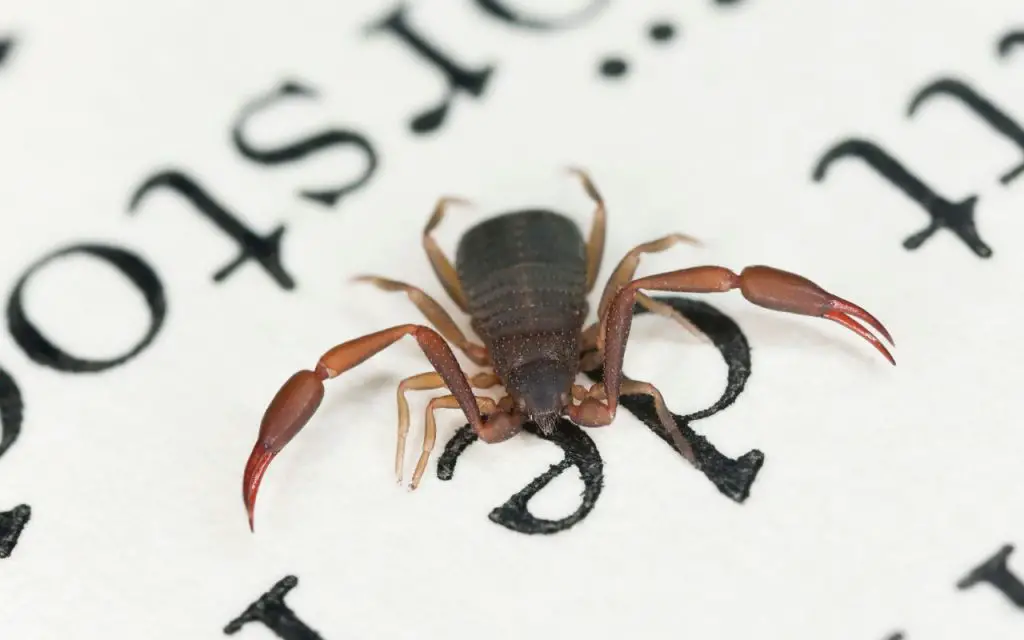
What Does a Pseudoscorpion Do?
Pseudoscorpion preys on various types of insects like Psocids and springtails. They target tiny beetle larvae, mites, flies, or thrips. However, these insects have different preying habits.
Since they have weak vision, they hunt by feeling with their pincers. While some prefer to conceal themselves and ambush insects, others stalk their prey aggressively. The pseudoscorpion grabs a little insect when it brushes against these sensitive hairs.
Once it has it prey in captivity, pseudoscorpion uses the poison glands in its pincers to paralyze it. It liquefies its food by injecting saliva into the prey.
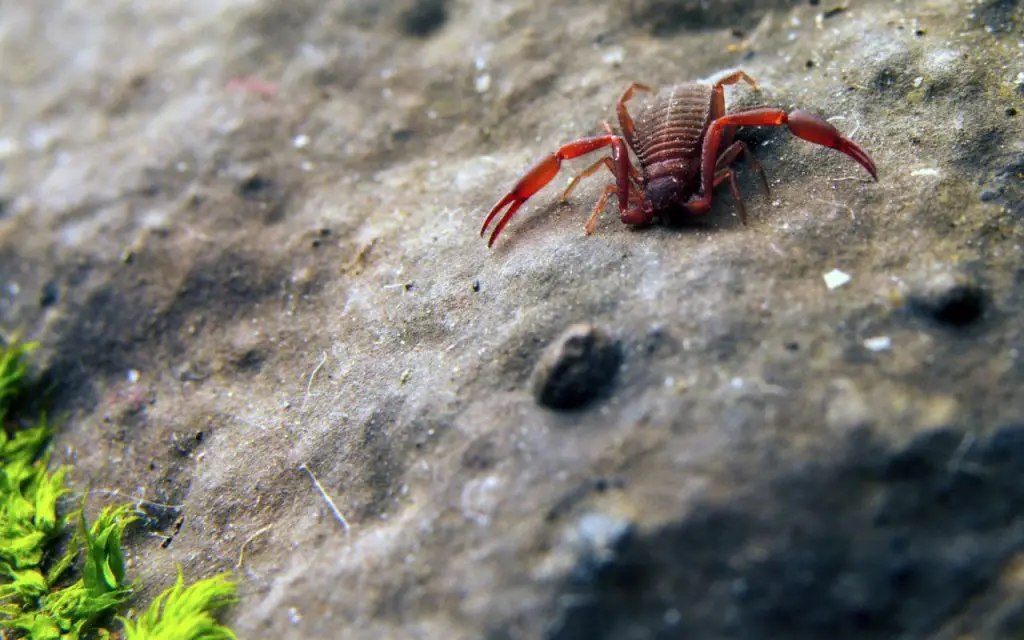
Are Pseudoscorpions Dangerous to Humans?
While pseudoscorpions might appear fierce, they are harmless to humans. They may be a nuisance, especially during summer and spring when they invade your home. However, they cannot cause any harm to humans or their belongings, such as furniture.
Seeing a few pseudoscorpions in your home can indicate a significant infestation, which could be annoying. Physical removal is the ideal eradication method.
You can slide a piece of paper underneath them and dump it outside your house. If you find them annoying, you can prevent their invasion by preventing the invasion of their prey.
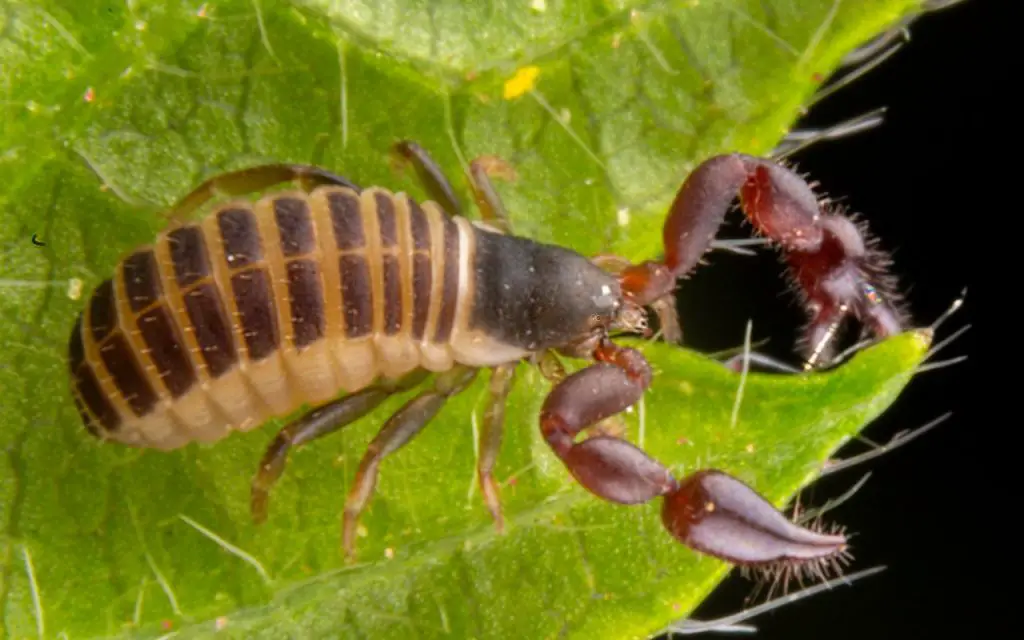
Are Pseudoscorpions Good?
Pseudoscorpions are beneficial to humans in several ways. They are predators that feed on small insects, mites, and other arthropods in homes and gardens. In addition, they feed on the moth larvae on clothes and help get rid of booklice.
They also prey on tiny beetles, mites, and flies on the carpet and furniture, saving you from such a nuisance.
Do Pseudoscorpions Bite?
Pseudoscorpions can neither bite nor sting humans, livestock, or pets. As a result, you can only notice their presence from their conspicuous pincers. It is easy to see them crawling on your skin.
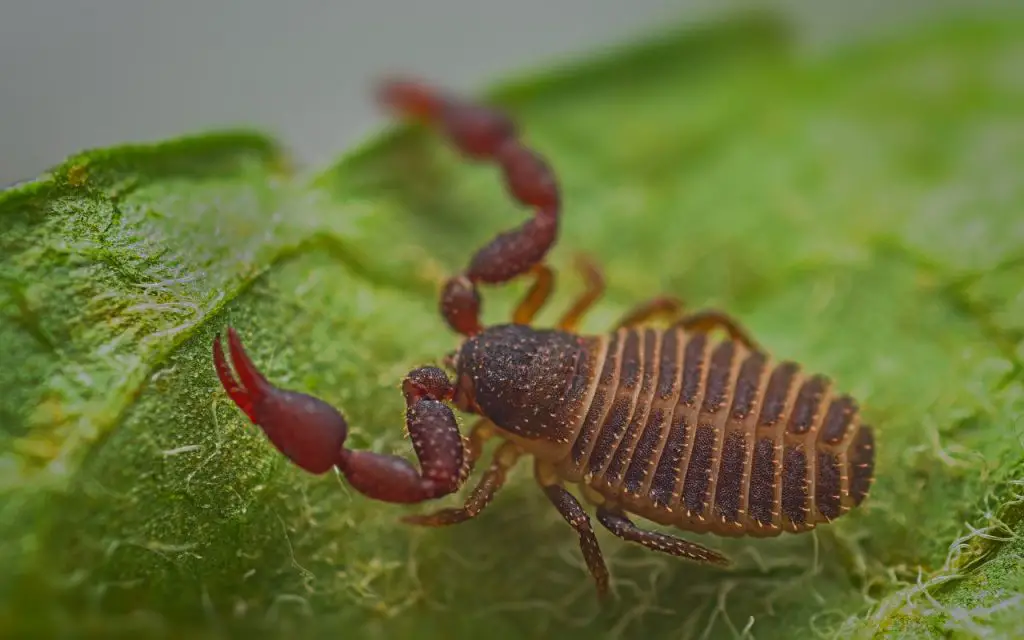
How are Pseudoscorpions and Real Scorpions Different?
Their size is the most notable difference between a pseudoscorpion and a real scorpion. Scorpions can be up to 7 inches long, although most of those you can frequently find in the United States is 2 inches or longer, making them simple to spot with the naked eye.
Contrarily, pseudoscorpions are usually undetectable due to their size. They range from just under a tenth of an inch to just over a quarter of an inch. Many are less than 1/8 inch.
Moreover, scorpions and pseudoscorpions differ in the body. A real scorpion has a long, curving abdomen, commonly known as its tail, and enormous pincers with stingers. The scorpions’ abdomen has 12 segments, the first seven of which are broad initially and gradually get narrower as they approach the stinger.
The remaining five segments cover the area around the scorpions’ tails. On the other hand, Pseudoscorpions have 12-segmented abdomens as well. However, the pseudoscorpion’s abdomen is proportionately wider and rounder, without tails or stingers.
Habitat is another common distinguishing factor between pseudoscorpions and actual scorpions. Pseudoscorpions primarily occupy the tropical regions of the world, with some populations in the temperate parts of America. They prefer outdoor moist habitats.
On the contrary, some actual scorpions prefer warm deserts such as dunes, flats, and Desert Mountains.
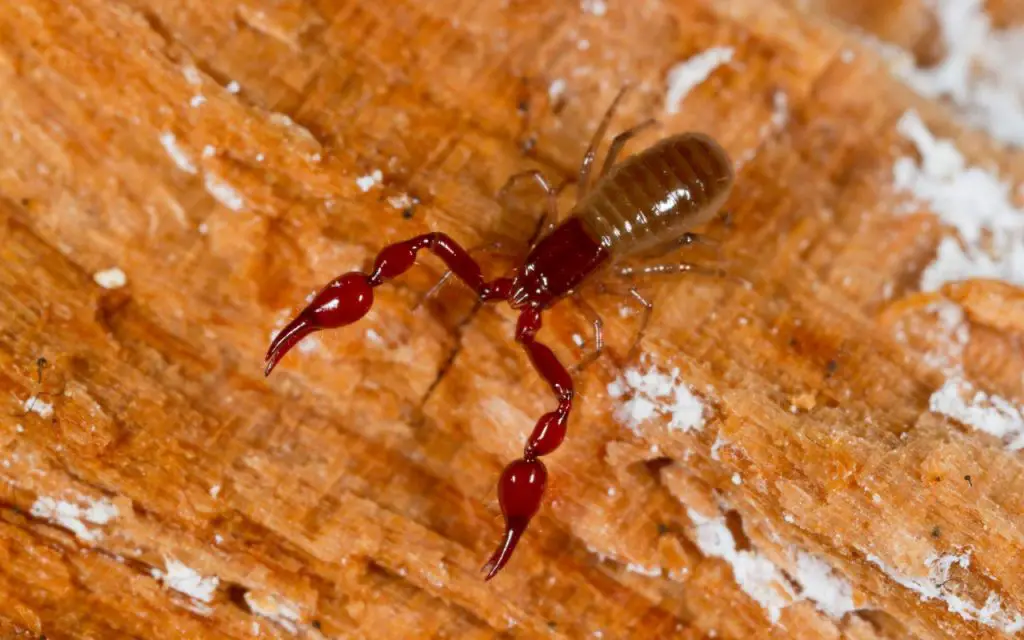
Pseudoscorpion Tick
It is easy to mistake pseudoscorpions for ticks due to their appearance, but their pincers set them apart. The two can co-exist in the same habitat. However, they are not as noticeable as ticks since they are much smaller than the latter.
Can Pseudoscorpions Pinch You?
Pseudoscorpions cannot pinch you because their claws are minute and weak. They also lack stringers. In fact, there is really no way whatsoever that one of these arachnids could harm you.
The best to distinguish them from a real scorpion is to look for a tail: If it has pincers but no tail, it’s a pseudoscorpion and therefore completely harmless.
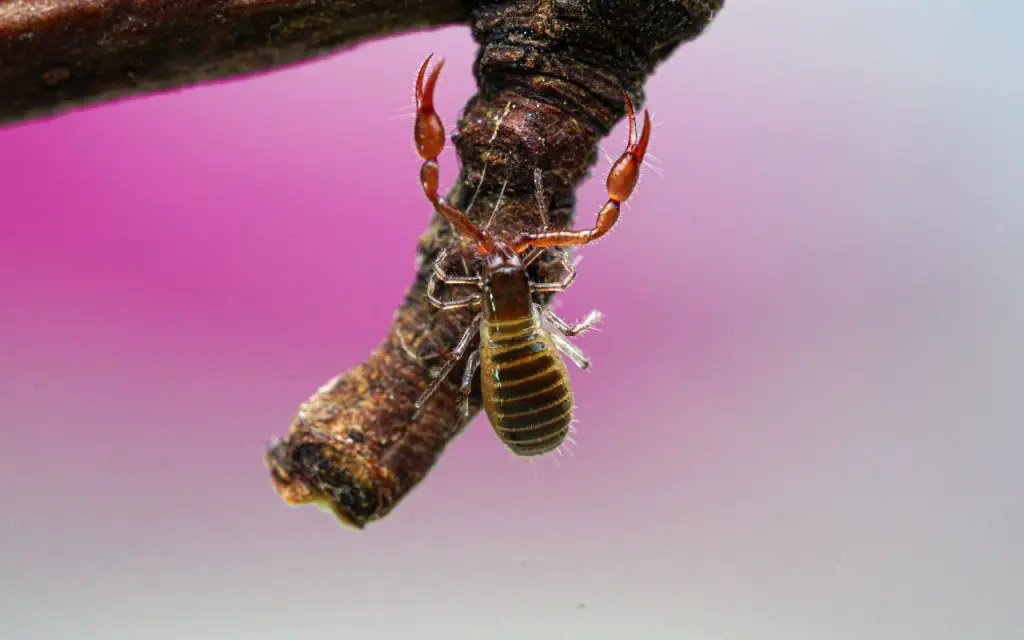
House Pseudoscorpion
The house pseudoscorpion, scientifically known as Chelifer cancroides L., is cosmopolitan and most common in homes. The mature house pseudoscorpion is 3 to 4 millimeters long with a deep mahogany color. The lengths of its four pairs of legs increase one after another. It has a 12-segment abdomen and an eye on each side of the cephalothorax (head plus thorax).
It has a teardrop-shaped body and pedipalps at the fore of the first pair of legs, twice as long as its legs. If they extend to crab-like, they can be as long as 7 to 9 mm across. These pseudoscorpions have an exciting mating behavior where the male creates a 1 to 2-centimeter mating territory.
Some arachnologists believe that when they rub their ventral surface on the center of this zone, they are placing pheromones. When a female enters this location, the male starts a mating dance by rapidly vibrating his body and flashing his pedipalps.
He places a spermatophore (a sac containing sperm) on the substrate, travels backwards over it, and then directs the female to climb on top of it to collect the sperm. The complete mating procedure lasts between 10 and 1 hour.
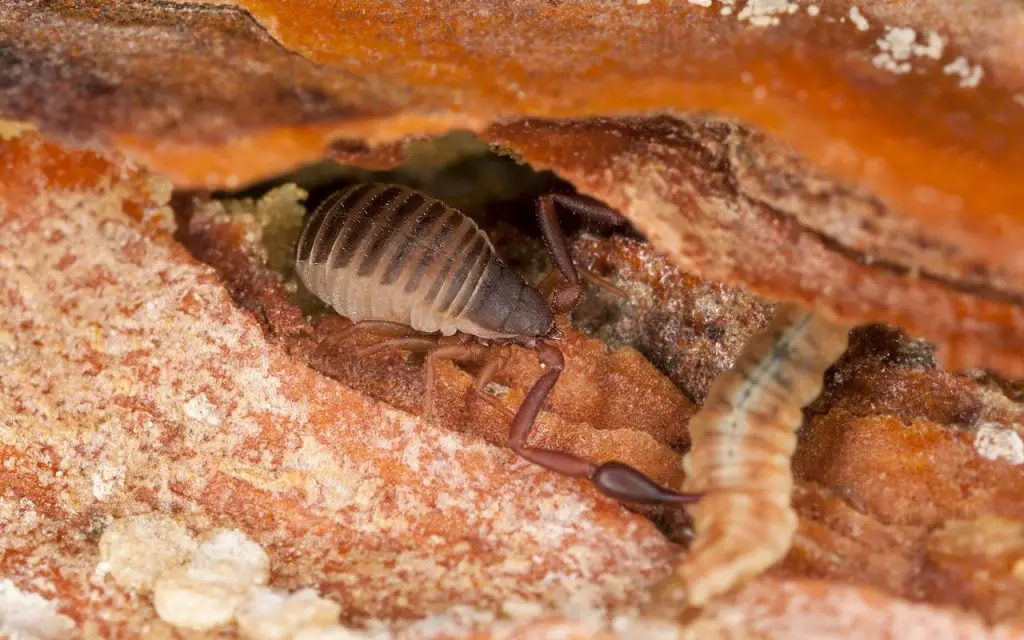
Are Pseudoscorpions Harmful?
Though pseudoscorpions have poison glands, they are harmless to people and animals. Their poison is primarily for feeding since they feed by external digestion.
Are pseudoscorpions helpful to humans? Conclusion
Due to its minute nature, pseudoscorpion is often mistaken for a bug or a tick. They share the common characteristic of movement by hitchhiking.
They are not in the same class as a tick or other harmful creature, however. Pseudoscorpions are beneficial predators that attack tiny bugs and insects.
When you think about it, most of the pests that invade our homes are tiny: Book lice, mites, ants, carpet beetles and other beetle grubs all like to eat our stuff.
So, given that Pseudoscorpions like to eat all of these things, we should really welcome them anywhere we see them!
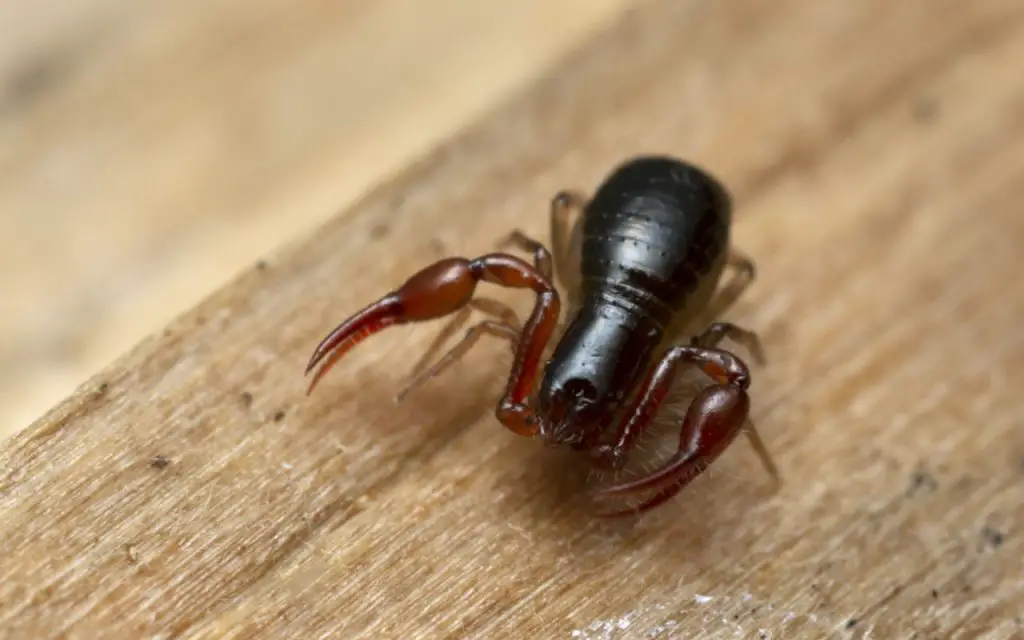
FAQ Relating to How Can Pseudoscorpions Be Helpful to Humans?
Countless studies prove that a pseudoscorpion does more good than harm to human life. Take a look at these frequently asked questions about the benefits of these insects.
Are Pseudoscorpions Rare?
Pseudoscorpions, also known as false scorpions, are common and widely spread. However, it is possible to think that it is a rare arachnid due to its tiny size, which is hard to notice. Surprisingly, these arachnids exist in more than 3,300 species and over 430 genera that scientists continue to discover.
They live in large populations in diverse climates, from temperate to cold regions. However, their most diverse and dense population is in the subtropics and the tropics, spreading up to the Islands. There are many of them in the Canary Islands, where you can find endemic species.
Are pseudoscorpions good?
Pseudoscorpions are always good to have around. They prey on harmful insects, and reduce damage to books, food and furniture. Thinkg of them as a natural insecticide, taking out bugs without using harmful chemicals.
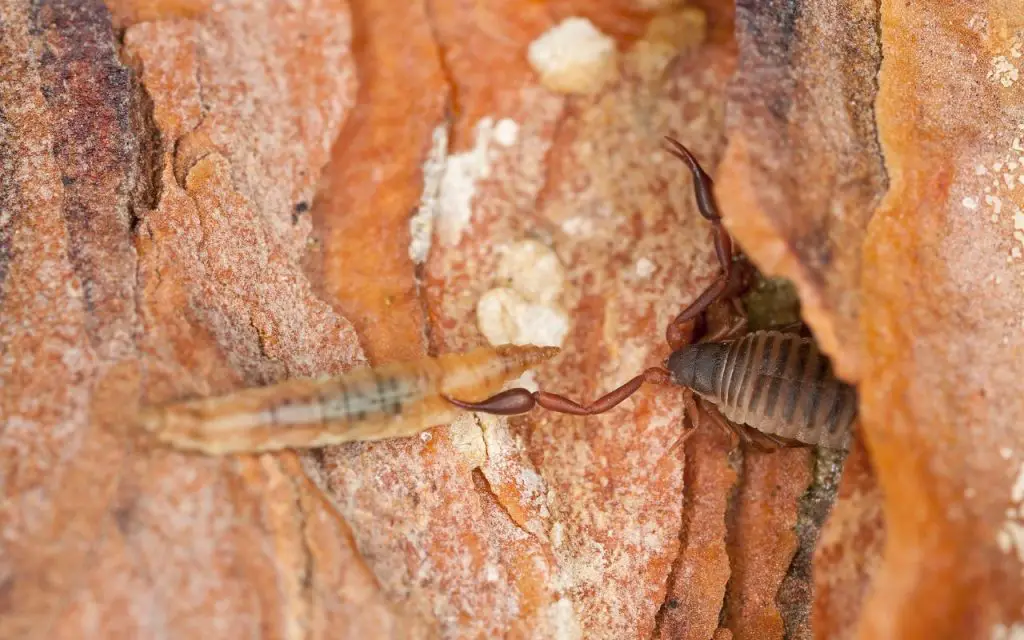
What Bug is the Rarest?
The land lobster (Dryococelus australis) is the world’s rarest bug. They are endemic and native to Lord Howe Island; you cannot find them anywhere else. Scientists believe this bug was extinct with other birds and other creatures on the Island in 1918.
Surprisingly, these insects were again seen in 2001 on Ball’s Pyramid, a rough and mainly arid volcanic islet 14 miles from Lord Howe Island. With Ball’s Pyramid being a tiny location, the land lobsters occupied small patches of shrubs.
Therefore, after collecting two adult pairs for captive breeding, Australian scientists plan to return them to Lord Howe Island. But first, they must eradicate the rats that prey on these bugs.
Do Pseudoscorpions Have 8 Legs?
A Pseudoscorpion has eight legs, each having five to seven segments. It is easy to distinguish the families and the genera with the number of fused segments.
Scientists continue to do more research on pseudoscorpions. Nonetheless, the following are key takeaways from several studies:
- Pseudoscorpions have poison glands, yet they are harmless to humans and animals
- They are beneficial to human beings
- They are different from actual scorpions
- They feed by phoresis method
- They are widespread yet challenging to notice due to their size.

